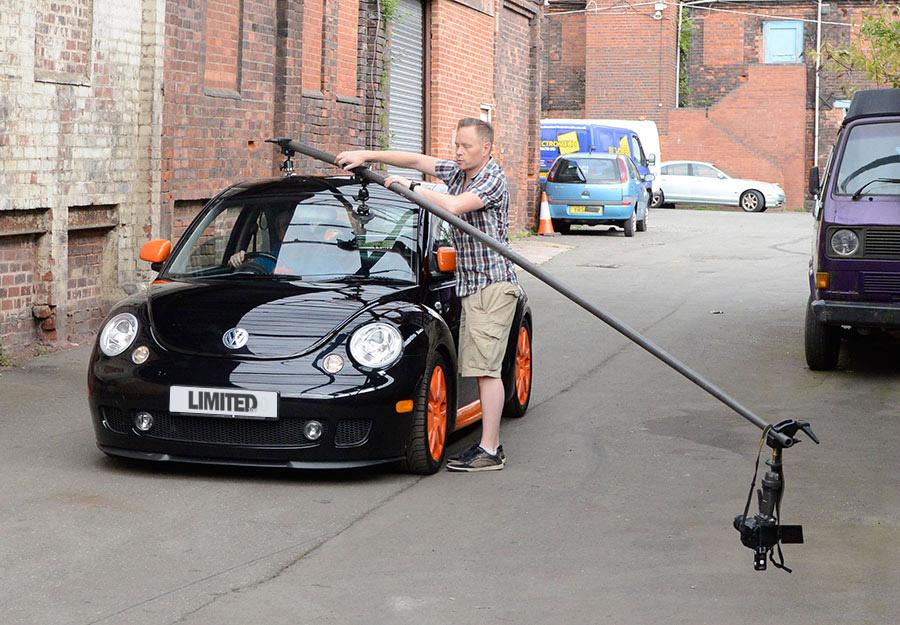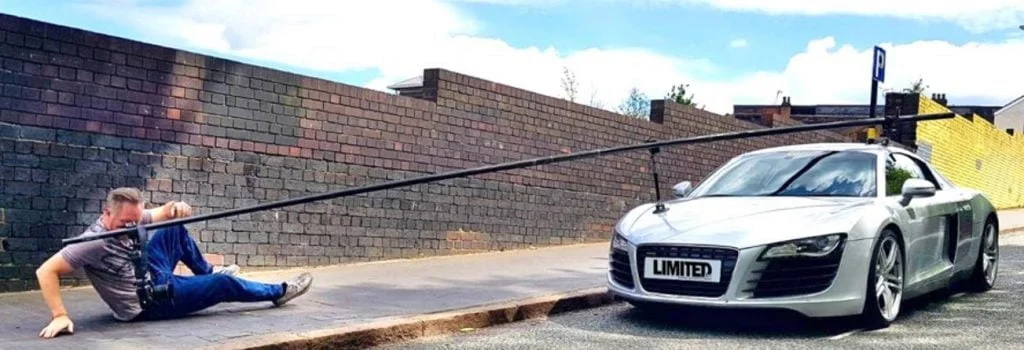10 Tips For Perfect Car Photography

You’re a massive petrolhead, you watch countless car-related YouTube videos and used to watch Top Gear religiously. Your car is your pride and joy and when you can be bothered you give it a damn good wash. You frequent car forums and love the idea of having a daily driver and then something a bit less sensible for the weekend. All this is great, but we argue that to be a true, well-rounded petrolhead, you need one final string to your bow; you need to be able to shoot great automotive photography.
A study by MDG Advertising found that usage of pictures can improve recall by 65%, and so being able to take effective photographs of cars is fundamental if you want to stand out and make a statement. Whether you need to sell a car, take a photo of your trackday project, or are helping a friend take car photos at a drag strip or time trial event, getting the perfect angle and lighting, and being able to set the scene with the right equipment, will give you the best chance of taking that winning shot.
Here are ten things to consider when taking your automotive photography to the next level:
1. Equipment
You don’t necessarily need a professional camera to get the best shot, but it depends how far you want to take it; an entry level camera will suffice as you learn to become a more advanced picture taker. Modern smartphones are equipped with some of the best technology. If you are just taking photos for use on social media and forums, then a smartphone camera will suffice. However, if you plan to print your automotive photography onto fine art paper, a canvas or on metal then you will need the highest resolution possible with the highest pixel density. This way no matter how large your image is ‘blown up’, the quality of the image will not pixelate.
2. Location
Some argue that great art has to have a story behind it, but we disagree. If something is pleasing to the eye then surely that makes it good art, especially if it satisfies the viewer. If a car picture is aesthetically pleasing and is taken in a historically significant, or nostalgic location, then it will be all the better for it, but we argue a historically meaningful location isn’t essential. Above all else, taking the perfect automotive photography requires lots of preparation, so choose the best time day and of year for your chosen location.
3. Lighting
There are two ‘golden hours’ for taking the perfect car photography; when the sun is at its softest; the hour after sunrise and the hour before sunset. This way you will avoid reflection and have a broad enough spread of sunlight to cover your car and bring out the best of its design features. If you’re taking a silhouette style image then facing the sun later in the morning, or earlier in the evening would be best, with the car between you and the sun and the sun higher in the sky; this way you can get a picture of the car’s shape with maximum clarity thanks to the increased brightness.
4. Depth of field
Depth of field refers to the distance between the closest and farthest objects in an image, when both of these are in focus. It also refers to how much is inside the image frame. It’s a complex skill but once mastered it’s invaluable. If you want to get a detail shot of an engine component or speedometer, as examples, then a narrow depth of field is appropriate. On the other hand, if you’re taking a picture of a car blasting down Santa Pod, then a wide field depth would be beneficial.
5. Dare to be different
The proliferation of smartphones that are equipped with increasingly advanced cameras means it’s becoming more difficult to make your photography stand out. Furthermore, myriad Instagram filters and online image editing systems can make the most amateur photographers’ work look like that of a seasoned professional. By testing unique angles, taking an aerial view, or even lying on the ground you can create some stunning imagery. Utilising model cars, and making them appear like they are on water is one example of how you can create surrealist and abstract automotive art, and taking pictures in unusual locations, where safe and permissible, can give you the leading edge.

6. Things to avoid
First of all, give the car a proper clean. When trying to get your best shot, make sure you or anyone else isn’t in the car’s reflection. Pay close attention to the background, especially when it is in focus. Choose a background that complements, rather than detracts from your car’s aesthetics.
7. Celebrate your surroundings
Driving isn’t always about the thrill of caning it round corners and opening the engine up on the straights. Sometimes driving joy is better discovered travelling to exciting new destinations and enjoying your freedom. Some of the best car photography doesn’t necessarily focus on the car, it celebrates the location. Taking a shot of a car driving through a mountain pass, through a tunnel or a major city? Sometimes it’s better if you let the car take the back seat and not be centre of attention for once.
8. Printing your photography
Once your car photo is taken you may wish to edit it to enhance dark areas and bring them to life. If you want to preserve your artwork for decades to come, then you may wish to turn your photos into high quality car prints. You may also decide to make these prints available on limited runs, and offer them in a range of dimensions and formats, such as framed fine art paper or on a canvas. Most importantly if you are wanting to professionally print and turn your car pictures into wall art, then it is of paramount importance that you work with a professional printing house and utilise fine art, or photographic paper.
9. Use a polarising filter
Ever wondered how some of the world’s greatest automotive photographers manage to take such consistent shots? Many of them are using a polarising filter. A polariser allows you to control the amount of light reflected off surfaces that may detract from the overall look and feel of your image. It can also bring back definition to elements of an image that might not stand out as much as you’d like. Another great benefit is that it will protect your lense.
10. Get technical
If you really want to make the most of your images try shooting in RAW files rather than just JPG files …. RAW files hold a lot more information in them than JPGs so you can boost the shadow areas or recover overexposed areas too. Often cameras that can shoot RAW files will actually come with basic editing software that will allow you to convert the files and tweak them to get the most out of the images. If you have access to photo editing software such as Photoshop or Lightroom these can work even better as you can get really creative with your images, and even change backgrounds or clone out objects which might be spoiling the shot.
